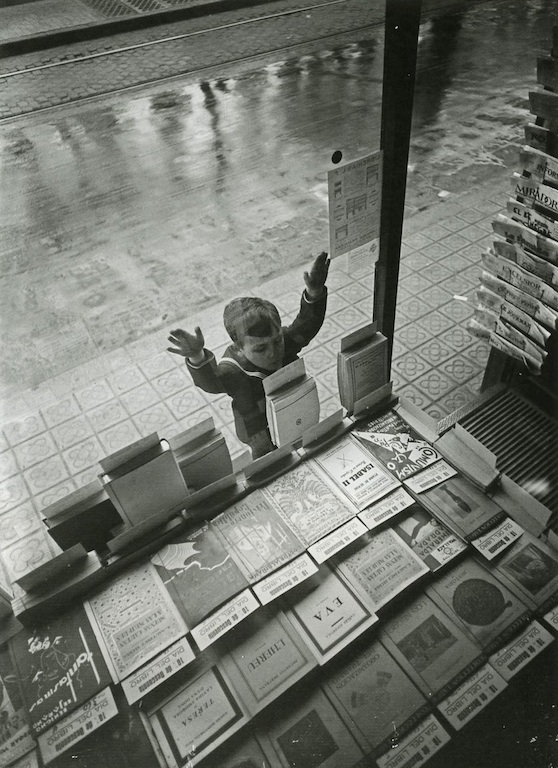
Día del libro, Barcelona (Book Day, Barcelona) by Gabriel Casas, 1932
Collection: Arxiu Nacional de Catalunya
In 1932, inside a bookstore in Barcelona, a photographer waits for a subject to fill the empty frame of the window. Perhaps he took other pictures of passers-by pausing to look at the display of books before this perfect moment occurred. Or could it be that he cut out the element of chance, and created the picture by asking the boy, who might have been someone he knew, to press his face and hands against the glass? To judge by his elevated position above the books, the photographer was standing on a chair or stepladder. This exaggerates the child’s littleness, another reason for suspecting an element of contrivance.
Not that it matters in the slightest. The picture, one of many Barcelona scenes by Gabriel Casas (1892-1973), a Catalonian photojournalist, looks entirely natural, appearing to document the boy’s spontaneous reaction to the enticing display. It bears the title Día del libro (Book Day), the name of a recently introduced annual event celebrating the book, which can be seen as a heading on the cards offering a 10 percent discount. The absence of other people makes the scene a quiet confrontation between the boy and the ever-expanding universe of books, which by the 1930s were cheaper and more accessible to ordinary people than ever before. He is too young to read the volumes on our side of the glass, but his innocent gesture of fascination and surrender signals the potential in his future for learning, personal development and pleasure that the books encapsulate. Where the covers are sharply defined and concrete, the watery blurs of the street behind his head elicit a sense of the boundless discoveries of the interior life that reading helps to stimulate.
The picture features in the exhibition Gabriel Casas: Fotografía, información y modernidad, 1929-1939 (Photography, information and modernity), showing until August 30 at the Museu Nacional de Catalunya in Barcelona—there is a catalogue in Spanish or Catalan. Casas was one of the most significant Spanish photographers in the 1920s and 1930s, and among the first to apply the compositional principles of the New Vision expounded by László Moholy-Nagy and other photographers; the angular construction and experimental bird’s-eye view in Día del libro shows this influence. He was a leading photojournalist at Imatges. Setmanari Gràfic d’Actualitats (Images. Weekly Graphic News), a magazine published in Catalan and modeled on Vu in Paris, and the bookstore picture may have appeared in its pages, or in another magazine, though the catalogue doesn’t go into this level of detail.


Comments [2]
08.25.15
11:52
08.28.15
06:21